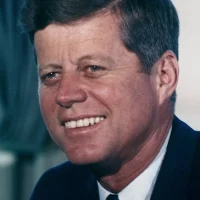C. Douglas Dillon was a politician and diplomat who served as U.S. Ambassador to France in the critical post World War II period, 1953-1957, and later as Under Secretary of State and Treasury Secretary. Son of a wealthy investment banker, Dillon graduated from Groton and Harvard, served in the U.S. Navy during World War II,… Read More "To be Young, Rich and Ambassador to Paris in the ’50s"
After Fidel Castro ousted Cuban strongman Fulgencio Batista, expropriated American economic assets and developed links with the Soviet Union, President Eisenhower authorized the CIA in March 1960 to develop a plan to overthrow Castro. The agency trained and armed Cuban exiles to carry out the attack. Shortly after his inauguration, John F. Kennedy learned of the invasion plan, concluded… Read More "New President, Bad Plan: the Bay of Pigs Fiasco"
Beginning of a Beautiful Friendship: The 1951 Treaty of Peace with Japan
The San Francisco Peace Treaty, signed by 48 nations on September 8, 1951, officially ended Japan’s position as an imperial power, provided compensation to those who had suffered in Japan during the Second World War, and terminated the Allied post-war occupation of Japan. The treaty’s seven chapters and preamble marked the end of hostilities between the signatories… Read More "Beginning of a Beautiful Friendship: The 1951 Treaty of Peace with Japan"
China’s Fight for Tiny Islands — The Taiwan Straits Crises, 1954-58
Recent disagreements over Beijing’s claim to the South China Seas (in which a tribunal constituted under the UN Convention on the Law of the Sea issued a non-binding decision in July 2016 in favor of the Philippines) in many ways is reminiscent of the potentially far more serious clashes over the Taiwan Straits, the first of… Read More "China’s Fight for Tiny Islands — The Taiwan Straits Crises, 1954-58"
How Did We Get Here? A Look Back at the Creation of the European Union
Welcome to Part I of our crash course on the formation of the European Union (EU). Each treaty signed between 1948 and 2007 brought Europe one step closer to today’s EU. Back in the aftermath of World War II, a group of European countries decided that the Dunkirk Treaty of 1947, which the UK and France… Read More "How Did We Get Here? A Look Back at the Creation of the European Union"
We Don’t Give a Dam — The Feud Over Financing the Aswan High Dam
Egypt’s agriculture has always depended on the water of the Nile; the river’s perennial floods, while critical in replenishing the fertile soil, constantly threatened to wash away a season’s harvest. The Aswan High Dam was built to regulate the river’s flooding as well as to create hydroelectric power and a reservoir for irrigation. Its planning… Read More "We Don’t Give a Dam — The Feud Over Financing the Aswan High Dam"
Cleaning up America’s Backyard: The Overthrow of Guatemala’s Arbenz
The Central Intelligence Agency launched a covert operation on June 18, 1954 to overthrow the left-leaning government in Guatemala. The coup, code-named Operation PBSUCCESS, deposed Guatemalan President Jacobo Árbenz Guzman, ended the Guatemalan Revolution and installed the military dictatorship of Carlos Castillo Armas. Armas would be the first in a series of U.S.-backed strongmen to… Read More "Cleaning up America’s Backyard: The Overthrow of Guatemala’s Arbenz"
Stop the MADness — Arms Control and Disarmament
The end of World War II ushered in an era of intense arms competition between the Soviet Union and the United States. Both sides produced nuclear armaments and other weapons of mass destruction at increasing rates as the bipolar world order evolved, finally achieving a state known as “mutually assured destruction” or MAD. President Eisenhower… Read More "Stop the MADness — Arms Control and Disarmament"
The U-2 Spy Plane Incident
On May 1, 1960, an America U-2 spy plane was shot down in Soviet airspace, causing great embarrassment to the United States, which had tried to conceal its surveillance efforts from the USSR. In 1957, the U.S. had established a secret intelligence facility in Pakistan in order to send U-2 spy planes into Soviet airspace… Read More "The U-2 Spy Plane Incident"
The “Lavender Scare”: Homosexuals at the State Department
In the 1950s and 60s, security within the U.S. government, including the State Department, was on high alert for internal risks, particularly Communists and what were considered to be sexual deviants—homosexuals and promiscuous individuals. Investigating homosexuality became a core function of the Department’s Office of Security, which ferreted out more people for homosexuality than for… Read More "The “Lavender Scare”: Homosexuals at the State Department"

